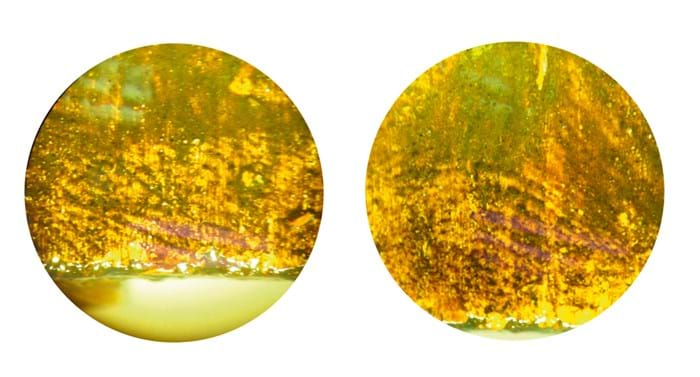
They were found on Study of the head and clasped hands of a young man as Christ in prayer, a little-known work that will be offered at Sotheby’s Old Master evening sale on December 5 with an estimate of £6m-8m.
The prints were in an original layer of paint in the lower edge of the 17th century sketch. Pressed into wet paint, the prints, which Sotheby’s has said are “most certainly impressions of the artist’s thumb” were hidden underneath overpaint and darkened varnish layers.
The auction house discovered them during technical examination and restoration of the work ahead of its sale.
George Gordon, worldwide co-chairman of Sotheby’s Old Master Paintings, said: “While as far as we know no comparable finger- or thumb- prints of Rembrandt have been found in other works in order to confirm the conclusion, the discovery of the marks in the original layer of paint along the lower edge make their connection to the artist highly credible.
“As the foremost master of the Western artistic tradition, Rembrandt is an artist who draws great interest from collectors around the world, so for a rare sketch such as this to be personalised in such a way makes the painting all the more interesting.”

Images of the fingerprints of Rembrandt Harmensz van Rijn (1606-69) discovered on ‘Study of the head and clasped hands of a young man as Christ in prayer’. Image: Courtesy of Sotheby's.
Conservator Michel van de Laar, who works in Amsterdam, added: “As in other colour sketches by the artist, the work was also determined to have been executed in one sitting - a practice known at the time as ten eersten opmaken - 'to complete the whole concept in one go', where additional colours and layers are hastily applied, even before the underlay has a chance to dry. Prone to smudging, the technique could only be accomplished by the most skilled of painters.
“An under-laying sketch in brown is locally left exposed and is finished only with a very simple pallet. Changes and retouches of the artist are recognisable yet give a certain dynamic. The discovery of the fingerprints, is further testament to the speed with which the work was likely executed and provides fresh insight into Rembrandt's complex but swift painting technique.”
Dating from c.1650, the study is “one of a small series of informal but intensely moving oil sketches” painted by Rembrandt of the same young man, from the neighbourhood in Amsterdam where the artist lived.
It will go on show at Sotheby’s in London on November 30 until the auction on December 5.





